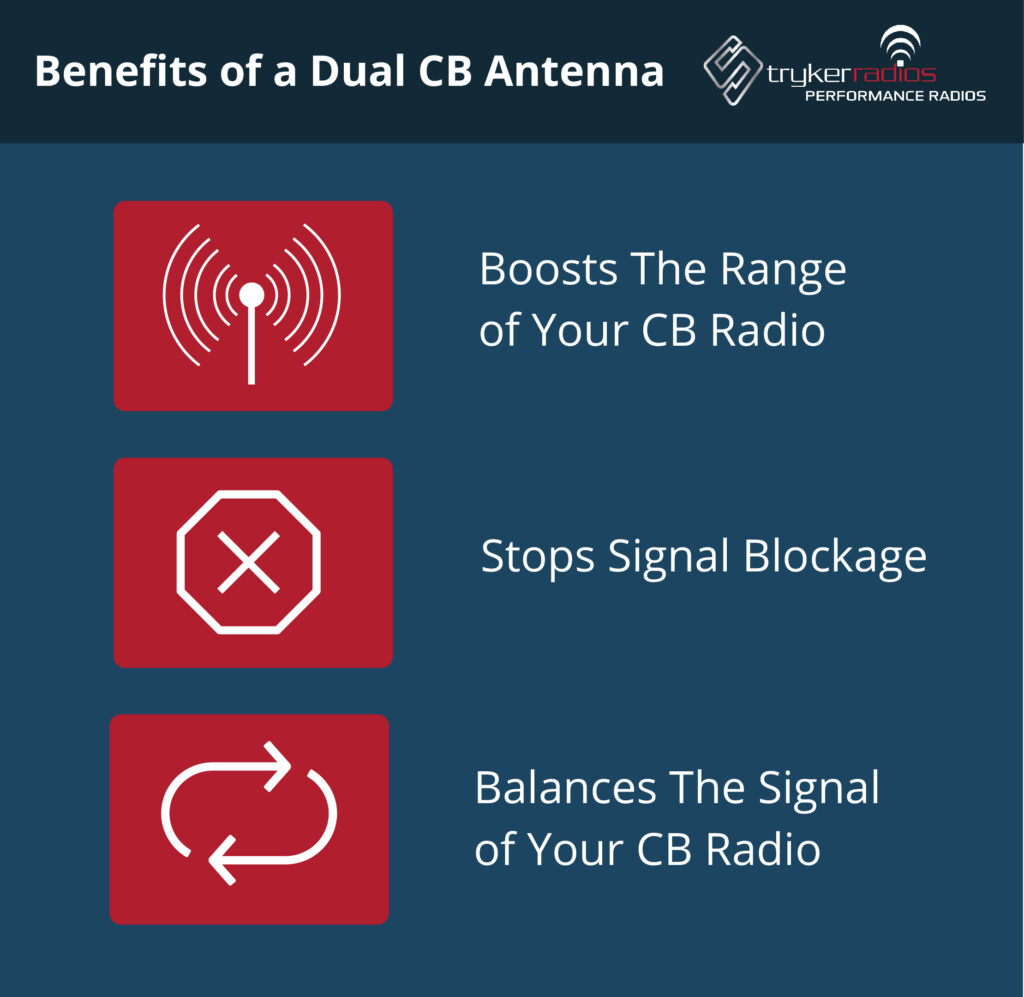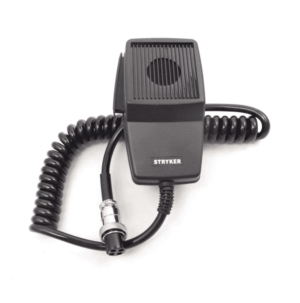A dual CB antenna serves as an important asset for pickup trucks and 18-wheelers. The reasons behind choosing a dual antenna system for these vehicles are numerous and noteworthy. In this comprehensive guide, we aim to walk you through everything you need to understand about a dual antenna setup.
Should I Install A Dual CB Antenna?
In general, a dual CB antenna offers several benefits like better range and communication. However, these benefits are limited depending on the terrain and your surroundings. Like regular CB antennas, the transmission of a dual CB setup is strongest on open roads and highways. It becomes a little less beneficial in mountainous or hilly terrain.
 Advantages of Dual CB Antenna
Advantages of Dual CB Antenna
A dual CB antenna system can make communication as a trucker easier.
It Boosts The Range of Your CB Radio
Two CB antennas provide a stronger reception and transmission signal. A standard single CB antenna can transmit or receive in a ring shape. However, when two CB antennas are joined together, they create a transmission design referred to as a “co-phased” system, which means your signal is strong, particularly in the direction your vehicle is moving.
It Stops Signal Blockage
The increased power from dual antennas means your CB radio signal doesn’t get as easily affected by buildings, hills, mountains, and trees
It Balances The Signal of Your CB Radio
If you use a standard single CB antenna setup, there is a high chance that your signal can be “blocked” on one side of your vehicle by RVs and other large trailers and vehicles. This is due to the CB antenna being mounted on a particular side of the vehicle. When the CB antenna is mounted on a single side, anything that interferes with it will block the signal. The dual CB antenna, with an antenna mounted on each side of the vehicle, prevents this from happening.
Dual Antenna Installation Requirements
For a dual antenna setup to work, you’ll need a few things:
- First, they require a different coaxial cable than single CB antennas. A single antenna uses an RG58 cable at 50 ohm whereas dual antennas use RG59 at 75 ohm co-phase coax cables with PL-259 connectors. Using the right cable is key for a good SWR
- They also require a space of 6 – 9 feet apart. This spacing is important because dual CB antennas, when set up correctly, can be omnidirectional, which is a reason dual CB antennas are installed in the first place. Many truckers choose to install their antennas on their mirror mount as this gives it the ideal distance
- You’ll need a t-shaped adapter as well to connect the two cables with your CB radio antenna
- High-quality CB antennas are required. Just because you have two now doesn’t mean they can be cheap or low-quality. It can be either stainless steel like Stryker’s heavy duty SR-A10 magnet mount antenna or a fiberglass CB antenna like the Firestik dual CB antenna kit
Dual CB Antenna Install Steps
- First, buy two antennas and suitable mounts for them. Ensure both antennas are sufficiently long so that the range and the performance are not compromised
- As mentioned above, get a co-phased CB coax cable that’s the special wiring for dual CB antenna installation
- While mounting these antennas together, make sure you keep a distance of between 5’ and 9’ between them to perform smoothly without interference in their signal patterns
- After these steps, now set up your radio. Your first concern is how to supply the electric power to the device for powering it on
- It is sometimes really difficult because the vehicle you have can make this supply trickier than ever. Usually, you get a power line with each radio that comprises a hot wire and a ground wire. Using this, you can power your radio on
- To avoid tricky wiring, you can use the fuse tapper that supplies power to your radio directly from the fuse box but without connecting too many wires. You can connect the black wire with the metallic portion of the circuit that’s already grounded, and your radio would power on.
Tuning Your Dual CB Antenna Setup
If you are getting high SWR readings after tuning your antenna repeatedly or want to know about the entire process, do not miss these points.
- First, it’s important to understand that the different SWR readings might be obtained under different conditions, so adjustment might still be needed
- Your SWR meter should be installed most professionally and accurately between your radio and antenna. An SWR meter non-professionally installed can give you high SWR readings for no reason
- Consult the manual setup side-by-side to know when the adjustment limit for your antenna has been reached. You cannot tune it beyond this limit. Otherwise, you can damage it
- First, test the metallic nature and the ground plane’s resistance with the multimeter and install your CB antenna and start tuning. Ensure you ground your antenna and its mount correctly and adequately to the vehicle’s metal framework
- Be very careful while installing the antenna stud. It should be installed in the right way on the right side of your antenna mount
- Check your antenna and the coax for any broken ends or defects. These unseen defects can lead to high SWR readings
- Conduct a system-wide check for continuity to ensure that all your CB system components have been appropriately grounded
Remember to test your SWR meter before your tuning process. If you are obtaining high SWR readings even after solving all other problems, it might be due to a defective SWR meter. Your warning light can also be problematic. So make sure you get it diagnosed too.
Using two CB antennas can improve how well your CB radio works, especially for big vehicles like trucks. They provide a better range, can overcome obstacles like buildings or hills, and get a more even signal. With the right setup, you can make your CB radio work better and communicate more clearly wherever you go.



